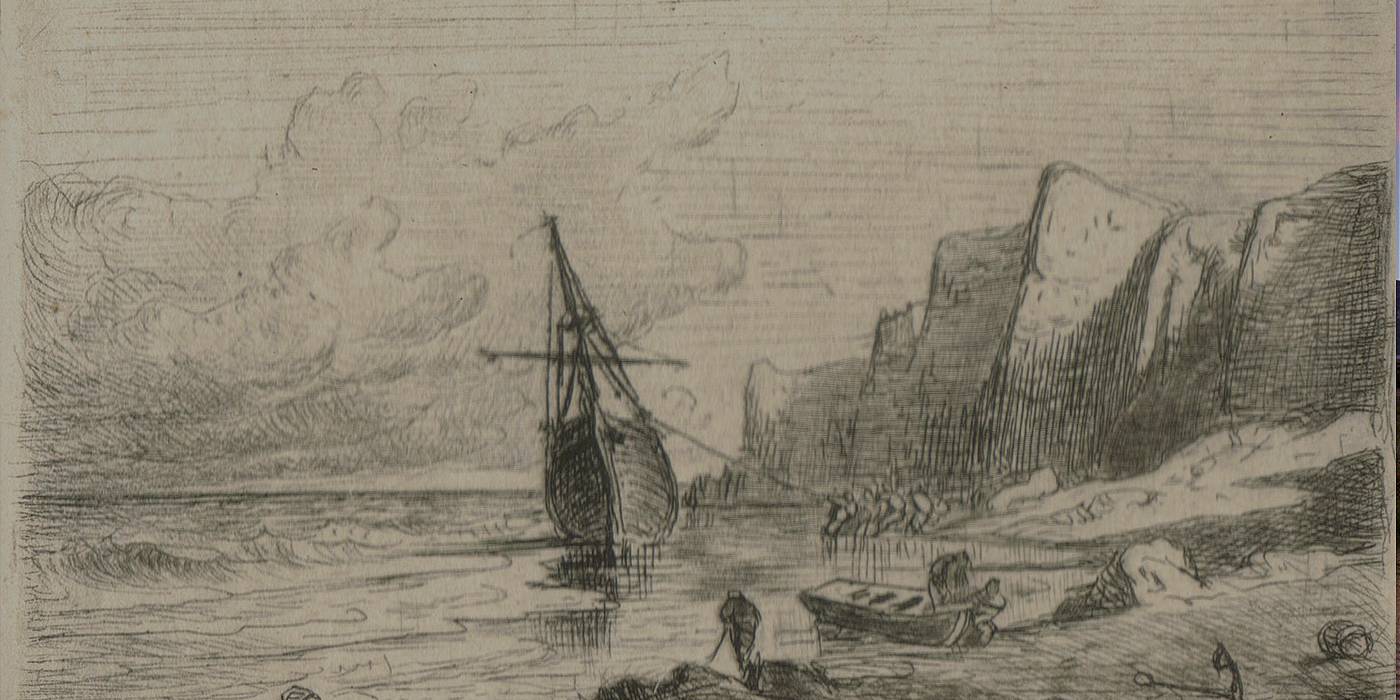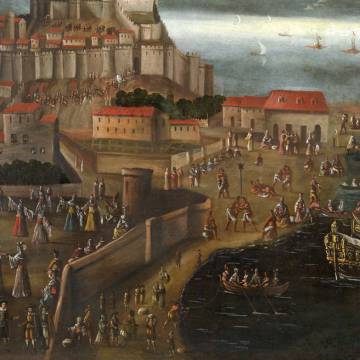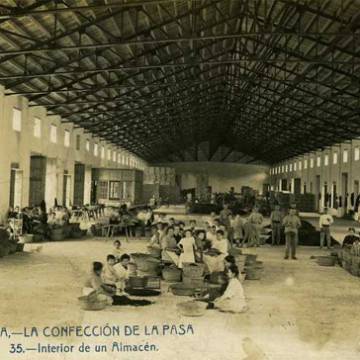History
CITY OF CORSAIRS

Fusion of cultures
Fusion of cultures
Modern day Dénia is the heir of very diverse cultures. The Iberian, Roman, Islamic and Christian civilizations left their mark which we can discover by means of its monuments, museums, archaeological ruins and neighbourhoods.
We recommend that you discover Dénia by exploring each of its zones:
Stroll through the city centre, where the main street of Dénia is located, C/ Marqués de Campo, with its terraces, shops and buildings of historical interest. The adjacent streets invite you to explore the Municipal Market, the old Raisin Warehouses, the Square: Plaza del Convento, the Church: Iglesia de San Antonio, etc.
Then walk around the Historical City Centre, where you will find the Town Council, the Church: Iglesia de Nuestra Señora de Loreto, the Ethnological Museum, etc.
Climb the steps to the Castle and discover its towers, walls and of course, its Archaeological Museum.
In the exterior, Les Roques neighbourhood will astonish you with its narrow streets and its low level houses.
Go to the fishing quartier of Dénia Baix la Mar neighbourhood, whose flair invites you to take a walk in the fresh air and relax.

fishermen neighbourhood
fishermen neighbourhood
Explore Dénia’s Fishermen neighbourhood Baix la Mar and stroll around the city’s seaside façades with terraces next to the sea, the Climate Monument, the Anchor Monument or the Bous a la Mar (Running of the Bulls into the Sea) Monument, the former Atarazanas (Dockyard) Buildings, the Cervantes Esplanade and the Lonja (Fish Market), and watch the small fishing boats come and go.

5th - 1st Century B.C. Iberian Age
5th - 1st Century B.C. Iberian Age
Archaeological ruins in Mt. Montgó :
l’Alt de Benimaquía
la Penya de l’Aguila.

1st Century B.C. - 6th Century A.D. Roman Age
1st Century B.C. - 6th Century A.D. Roman Age
The City of Dianium: the redistribuition centre of products originating from North Africa and Italy.
Sertorio established his naval base in Dénia in the 1st Century B.C. Important strategic and comercial port. 2nd Century A.D. During the first half of the century, the city reached its máximum splendour.

6th Century - 8th Century Byzantine/ Visigoth Age
6th Century - 8th Century Byzantine/ Visigoth Age
From 552 to 624 A.D., Dénia formed a part of the Byzantine province of Spania, which represents Dianium’s continuity in the Roman world. The Visigoths settled in this zone in the 7th Century.
- In the Visigoth age, we highlight the establishment of the Episcopal See in Dénia which reported to the Diocese of Toledo.
...
...

8th Century - 13th Century
Islamic Age
8th Century - 13th Century
Islamic Age
The Islamic Daniya.
Importance of Dénia’s Port, source of its major urban development: the Dénia Port was selected as the construction site of the new dockyards for the Caliph’s naval fleet.
11th Century: Muyahid seizes control of the Dénia Port’s Navy from the zone’s troops and is proclaimed Emir.
1086 A.D.: Dénia is converted into a Taifa Kingdom.

13th Century - 16th Century
Medieval Christian Age
13th Century - 16th Century
Medieval Christian Age
1244: Christian conquest of Dénia by Pere Eiximen d’en Carròs (sent by King Jaime I the Conqueror)
14th century: King Pedro III of Aragón appoints his cousin, Alfonso of Aragón as 1st Count of Dénia.
15th century: Juan de Trastamara transfers the county of Dénia to a Castilian family: Sandoval y Rojas. In 1487, Diego Sandoval y Rojas is appointed as the 1st Marquis of Dénia

16th Century - 18th Century
Modern Age
16th Century - 18th Century
Modern Age
1580: Miguel de Cervantes disembarks in Dénia following his captivity in Algeria.
1604: The Nª Sra de Loreto or Augustine Barefoot Nuns Convent is founded.
1609: Expulsion of the Moriscos (converted Muslim Christians).
17th century: Dénia receives the title of city.
- 18th century: Construction of the Church: Iglesia de La Asunción and remodelling of the Church: Iglesia de San Antonio.
...
...

19th Century
19th Century
Economic splendour due to the Raisin Trade.
Raisin exports to major European cities.
Construction of the Dénia-Carcajente Railway.
Production of over 400,000 quintales (hundredweight) of raisins by the end of the century.

20th Century
20th Century
Early 20th Century: Attack of the Grape Phylloxera pest on the grapevines of Dénia.
Development of Agriculture, Industry and Toy Production
Complete opening of the city’s main street: Calle Marqués de Campos.
60’s Decade: Development of Tourism and the Fishing Industry.
...
...

